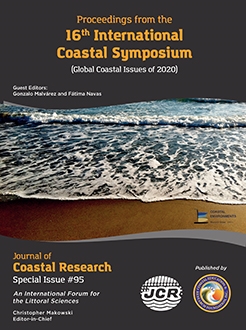Choi, J.W.; Kwon, J.I.; Heo, K.Y., and Choi, J.Y., 2020. Hindcasting of search and rescue cases using the trajectory model based on KOOS (Korea Operational Oceanographic System). In: Malvárez, G. and Navas, F. (eds.), Global Coastal Issues of 2020. Journal of Coastal Research, Special Issue No. 95, pp. 900–904. Coconut Creek (Florida), ISSN 0749-0208.
The most important consideration for search and rescue (SAR) is to accurately predict the trajectory of missing persons or vessels to secure a search area and the golden time for rescuing survivors. The SAR modeling system of the Korea Operational Oceanographic System (KOOS) is directly linked to the Weather Research and Forecasting model (WRF), the Modelo Hidrodinâmico (MOHID), and the Modular Ocean Model (MOM5). The SAR prediction result produced by KOOS is provided to the Korea Coast Guard, which is responsible for SAR missions in Korea. In this study, numerical model results were evaluated using actual accident case and the trajectory data of drift buoys. Prediction accuracy was explored using 1) two different horizontal resolutions (300 m and 4 km) of the MOHID and 2) two different time resolutions (MOHID: 1 h; MOM5: 1 day) at the same horizontal resolution (4 km). The analysis of drift prediction accuracy showed that prediction accuracy was relatively high for the MOHID at a resolution of 300 m, which was a higher horizontal resolution close to the coast. This provided more accurate tidal current results. The time resolution in the offshore region affected ocean currents, and prediction performance was relatively high for the MOHID at a resolution of 1 h. Based on these results, it was found that securing high-resolution data in time and space is essential for improving the performance of drift prediction in adjacent seas in the Korean Peninsula.





